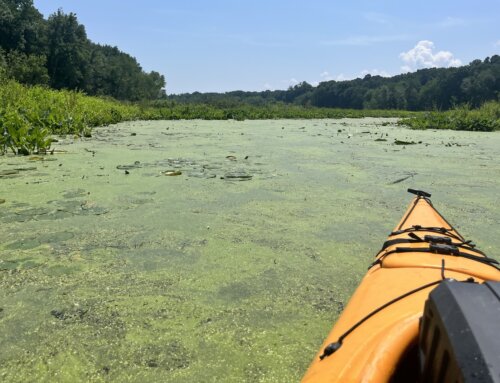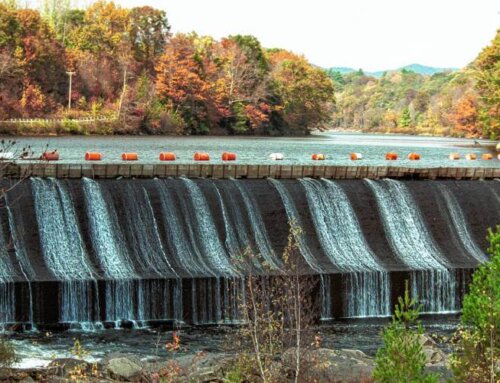A helping hand for the Connecticut River:
The Connecticut River Mitigation and Enhancement Fund
JULY 2008 — Sometimes we get it right. Sometimes with enough good will and resolve environmental interests and business interests both reach their goals. In the case of relicensing the Fifteen Mile Falls Hydroelectric Project both interests were served, river protection and enhancement along with electric power generation. In 1997 the project owner and a group of federal, state and local government agencies as well as a dedicated group of non- governmental organizations reached accord in a signed Settlement Agreement (SA). The overall results foster economic interests and enhance the environment of the Connecticut River.
All dams negatively affect rivers and streams. Dams change the flow equilibrium of a river increasing erosion forces up and downstream. Dams stop the spawning migration of anadromous and resident fish. Dams trap silt that degrades fish and other aquatic species spawning and rearing habitat. Slow movement of water through a reservoir allows the sun to heat up the water driving down the dissolved oxygen levels. And yet, as the largest hydroelectric facility in New England, there are sound economic reasons for the 3 dams at Fifteen Mile Falls to continue to produce electric power.
Our North Country response to these competing interests is captured in the Settlement Agreement that sets out broad standards for water quality, fisheries, wildlife, recreation, land use, aesthetic and cultural resources to be protected by the new license. Key elements of the SA were: continued operation of the FMF Project as a “peaking” power producer; protective minimum flows in the river below the dams; protection of 9,000 acres of land; and creation of a Mitigation and Enhancement Fund to make grants to execute local projects that compensate for the FMF Project impacts on the river and its ecosystem.
So there you have it, by entering into good faith negotiations the FMF Project owner will continue to make money for its stockholders, generate the electric power we need here in New England, and the environment will be significantly improved for all of the species that depend on the waters of the Connecticut River, including humans.
The signers of the SA sit as an advisory committee to the Fund and began making grants in the fall of 2002. The committee would like to alert interests in eligible area that a funding round is about to start and it is not too early to begin planning in preparation for your application to the Fund.
The terms of the SA control the activities eligible for funding and set out three specific categories of projects:
- River restoration work: Projects that improve or enhance water quality, fisheries and habitat for river-dependent species;
- Wetland restoration, protection and enhancement: Projects that restore or enhance wetlands to mitigate for wetlands lost or adversely affected by the project;
- Riverine shoreland protection: Projects that restore or protect buffers and eroding river or stream banks within the watershed.
If you have a project that can help the river from the White River northward to the headwaters including all of the tributaries you may apply if you are a nonprofit organization, community organization, educational institution and/or a federal, state and local government agency. Organizations must be recognized as tax-exempt under Section 501(c)(3) or other appropriate IRS code. Nonprofit organizations or community groups that do not have 501(c)(3) status may apply if another tax-exempt organization acts as fiscal agent. That is an intentionally broad sweep of organizations eligible to help the River.
The advisory committee urges potential applicants to review the plans developed by the organizations listed on page 2 in the application guidelines available at the links below. Grant reviewers will be looking to see that they have been contacted, have discussed the project with you and support the idea. These government and community groups have done a lot of the spade work to identify issues facing the river and particular river resources in need of protection. Use their good work to your advantage.
The Fund will accept applications for grants that range from hundreds of dollars all the way up to multiyear grants that exceed $25,000.00. For grants larger than $25,000.00 a concept paper must be submitted by Sept 30th 2008. Final applications for all grants are due Nov 30th 2008. Concept papers and final applications should be mailed or emailed to the Upper Connecticut River Mitigation & Enhancement Fund c/o the Upper Valley Community Foundation, 16 Buck Road, P.O. Box 995, Hanover, NH 03755-0995.
Application forms and guidance are on line at http://www.nhcf.org/page16898.cfm and at http://ctriver.org/river_news/river_news.html#Fund
Have more questions? Contact Kevin Peterson, Senior Program Officer, at the UVCF office in Hanover at (603) 653-0387 or by e-mail at kp@nhcf.org. You can also contact David Deen at the Connecticut River Watershed Council, PO Box 206 Saxtons River, VT or call him at (802)869-2792, or email him at crwc@sover.net.
David L. Deen is River Steward for the Connecticut River Watershed Council, an organization that has been an articulate voice for the Connecticut River for more than half a century.
[/fusion_builder_column][/fusion_builder_row][/fusion_builder_container]







